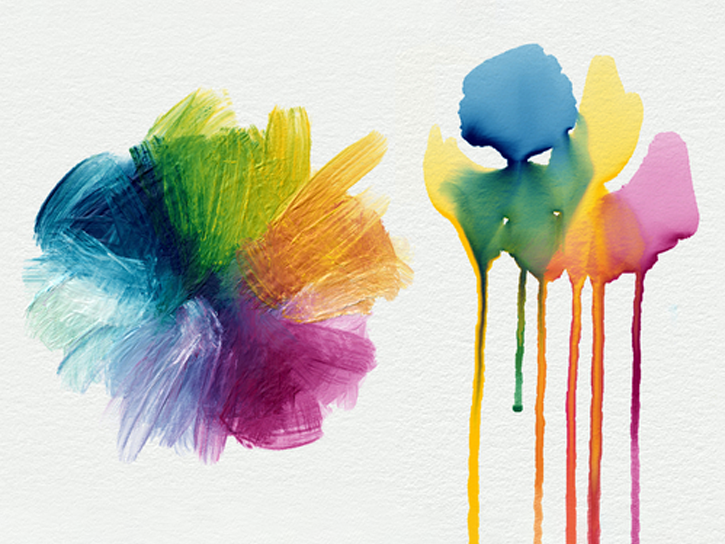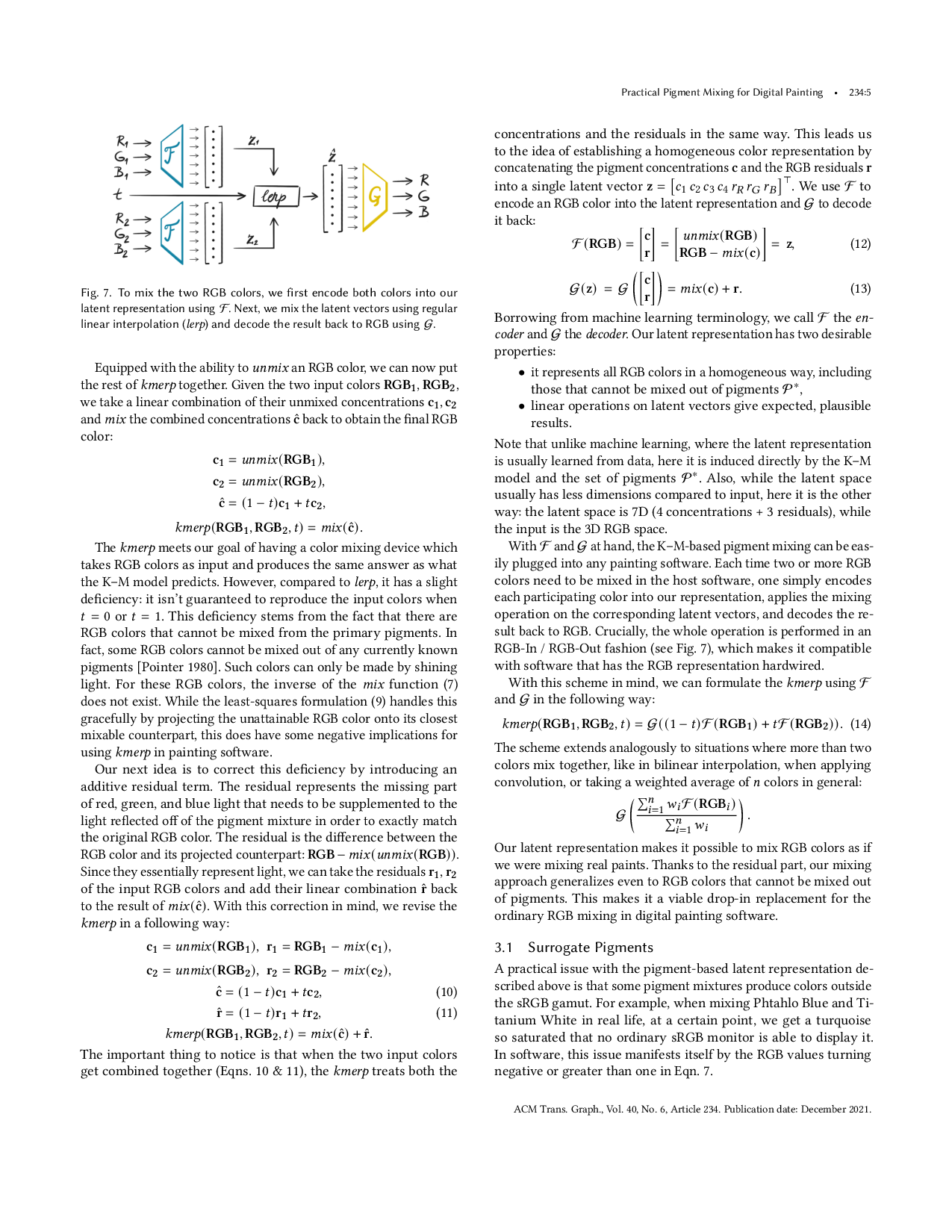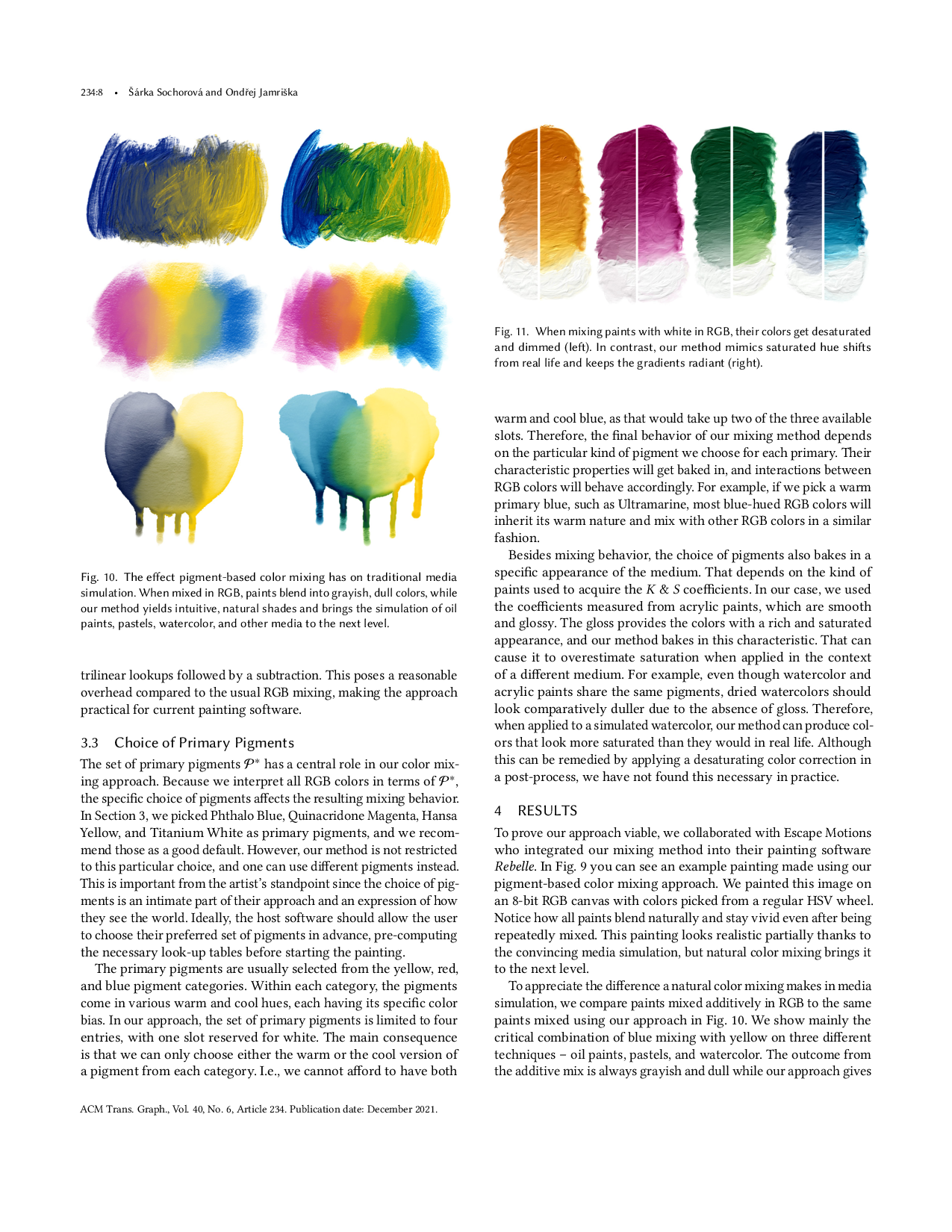Practical Pigment Mixing for Digital Painting
ACM Transactions on Graphics (Proceedings of SIGGRAPH Asia 2021) 40(6):234, 2021
There is a significant flaw in today's painting software: the colors do not mix like actual paints. E.g., blue and yellow make gray instead of green. This is because the software is built around the RGB representation, which models the mixing of colored lights. Paints, however, get their color from pigments, whose mixing behavior is predicted by the Kubelka-Munk model (K-M). Although it was introduced to computer graphics almost 30 years ago, the K-M model has never been adopted by painting software in practice as it would require giving up the RGB representation, growing the number of per-pixel channels substantially, and depriving the users of painting with arbitrary RGB colors. In this paper, we introduce a practical approach that enables mixing colors with K-M while keeping everything in RGB. We achieve this by establishing a latent color space, where RGB colors are represented as mixtures of primary pigments together with additive residuals. The latents can be manipulated with linear operations, leading to expected, plausible results. We describe the conversion between RGB and our latent representation, and show how to implement it efficiently.
















